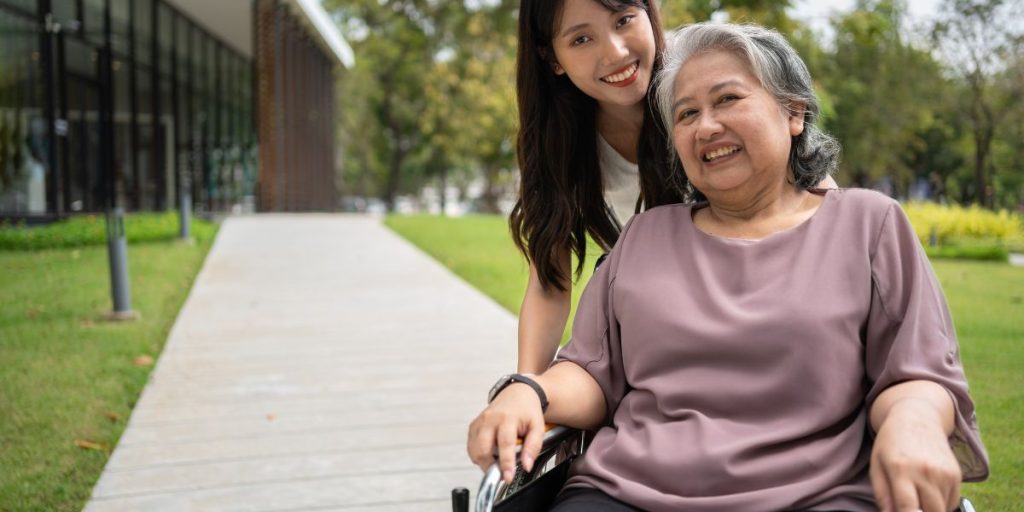Caregiving has always been demanding, requiring dedication, patience, and compassion. However, as technology advances, caregivers now have access to innovative tools and solutions that enhance their ability to provide efficient and effective support.
From remote monitoring to AI-powered assistance, technology is transforming the caregiving landscape, making it easier for caregivers to manage their responsibilities while ensuring the well-being of their patients or loved ones.
1. Remote Monitoring and Telehealth
One of the most significant advancements in caregiving is the rise of remote monitoring systems and telehealth services. Caregivers can now use smart devices and wearables to track vital signs such as heart rate, blood pressure, and glucose levels in real-time. These technologies enable early detection of health issues, allowing caregivers to intervene before problems escalate.
Telehealth services also make it possible for caregivers to connect with healthcare professionals via video calls, reducing the need for frequent hospital visits. This is particularly beneficial for elderly or disabled individuals who may have difficulty travelling to a healthcare facility.
2. AI-Powered Assistance and Virtual Caregivers
Artificial intelligence (AI) has brought significant improvements to caregiving by automating routine tasks and providing virtual assistance. AI-powered chatbots and voice assistants can remind patients to take their medications, schedule appointments, and even provide companionship through interactive conversations.
For example, AI-driven home assistants like Amazon Alexa and Google Home can be programmed to set reminders, play soothing music, or answer health-related queries, reducing the burden on caregivers while ensuring patients stay engaged and informed.
3. Smart Home Technology for Enhanced Safety
Smart home devices have revolutionized the way caregivers ensure the safety of their patients. Motion sensors, smart locks, and fall detection systems can alert caregivers in case of an emergency, providing peace of mind even when they are not physically present.
For instance, smart cameras with two-way communication allow caregivers to monitor their loved ones remotely and interact with them when needed. Additionally, GPS-enabled tracking devices help locate individuals with dementia or Alzheimer’s who may wander away from home.
4. Mobile Apps for Caregiver Support
Caregiving can be overwhelming, but mobile apps have made it easier to stay organized and manage responsibilities efficiently. Apps like CareZone, CaringBridge, and Medisafe help caregivers track medications, manage appointments, and communicate with healthcare professionals.
Some apps also provide emotional support by connecting caregivers with online communities where they can share their experiences, seek advice, and find comfort in knowing they are not alone in their journey.
5. Robotics in Caregiving
Robots are gradually becoming an integral part of caregiving. Robotic companions such as Paro, a therapeutic robot seal, provide emotional support to elderly individuals by responding to touch and voice. These robots can help reduce loneliness and improve mental well-being.
In some hospitals and senior care facilities, robotic assistants are being used to perform repetitive tasks such as delivering medications, cleaning rooms, and assisting with mobility, allowing human caregivers to focus on providing more personalized care.
6. Wearable Health Tech for Personalized Care
Wearable devices like smartwatches and fitness trackers have become essential tools for caregivers. These gadgets monitor heart rate, oxygen levels, and physical activity, providing real-time health data that helps caregivers tailor their support based on individual needs.
For example, individuals with chronic conditions such as diabetes can use continuous glucose monitors (CGMs) to track their blood sugar levels, reducing the risk of complications and making it easier for caregivers to manage their care.
7. Data Analytics for Improved Decision-Making
Big data and analytics are playing a crucial role in caregiving by helping professionals and family caregivers make informed decisions. AI-driven data analysis can predict health trends, identify risk factors, and suggest personalized care plans based on a patient’s medical history.
Healthcare providers and caregivers can use this information to proactively manage chronic diseases, optimize medication plans, and improve overall patient outcomes.

